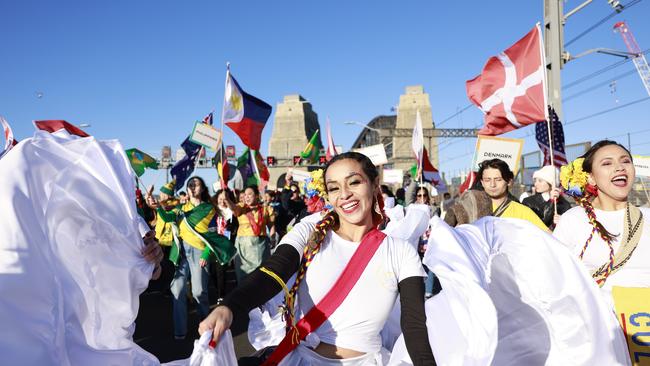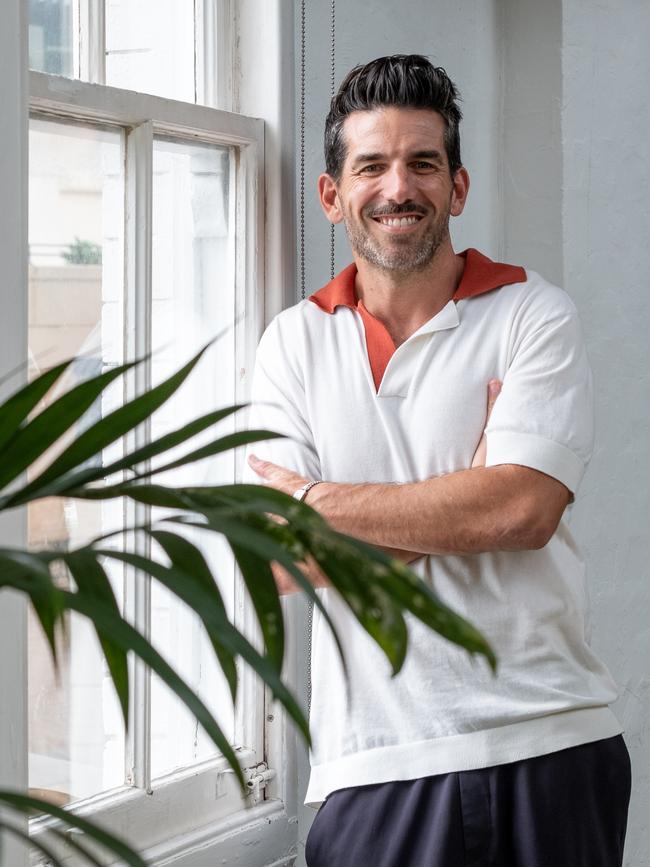How FIFA Women’s World Cup’s marketers created a cultural movement
After a record-breaking tournament by TV viewers and game attendance, meet the marketers who led the charge in creating the social and cultural movement behind FIFA Women’s World Cup.

On a cold, clear-sky winter morning in June, 4000 football fans gathered on the Sydney Harbour Bridge to celebrate the upcoming FIFA Women’s World Cup.
That moment, which marked 25 days until the tournament would commence on 20 July, was pivotal in galvanising audience engagement with the event, according to general manager of sports marketing and experience agency, GMR, part of the TBWA\Sydney Group, that was engaged by FIFA to develop and lead the campaign.
That single activation earned global, national and local media attention, and reached 1.3 billion people in 126 countries.
“That’s when I really felt like the World Cup fever was taking off,” general manager of GMR Australia Ted Helliar said.
It was one of many major moments that punctuated a two year-long marketing investment ahead of the tournament, which helped drive what became a sporting event – and cultural phenomenon – for the history books, breaking records at every turn, from ticket sales to attendance and TV viewership.
Those key marketing moments, which included the Sydney Harbour Bridge celebrations, also included the creation and launch of a brand campaign and the “Unity Beat”, a chant that GMR created to unite fans, 100 days before the event. It hosted activations in nine host cities across New Zealand and Australia. This activity alone generated 150,000 ticket sales within 24 hours.
Australian TV viewership records were broken with the Matildas’ semi-final game, which saw 11.5 million people tuning in.
A total of just under two million tickets were sold, smashing the original target of 1.37 million. Attendances were up by 600,000 people – more than any Women’s World Cup ever had – with an average crowd of 30,000 per game.
France’s 2019 tournament, by comparison, attracted an average crowd of 21,000 per game.
Global viewership topped two billion and, apart from being an impressive number, that audience size does matter. Some marketing experts have said that while driving ticket sales, those tuning in from other locations play a critical role in building awareness and salience in the long term.
FIFA Women’s World Cup head of marketing Kim Anderson said it was a remarkable, albeit expected, feat, considering the fact that her team had just two years to plan and execute its marketing strategy, compared to the usual 12-year lead time for the men’s tournament.

There were other headwinds to battle, too.
“There were a lot of naysayers, both internally and externally before the tournament, (but) I think we were pretty confident in our strategy the whole time,” Ms Anderson told The Growth Agenda.
Then there was also the challenge of geography; France, for example, benefited from proximity to its European neighbours to boost visitor numbers. Attracting international visitors to Australia and New Zealand, at a time when global travel was still recovering post-Covid, was a challenge to overcome, said Ms Anderson.
“For us, a big part of the challenge was reaching Aussies and Kiwis, because we knew with the distance, and even with markets like China still uncertain about travel, at least 80 per cent of our ticket sales would have to come from Australia and New Zealand,” she said.
“That was a lot of people to galvanise locally and make sure that they were really behind this.”
In 2021, FIFA Women’s World Cup launched a new brand identity, “Beyond Greatness”, with communications designed to “unite and inspire people around the world”.
“(FIFA) had the platform, but we needed to give it meaning in this market,” Mr Helliar said.
“The big unlock for both of us was at the point where we realised, we can’t just keep talking about this as a football tournament to football fans.
“To break records and be the biggest thing we could, we needed to turn it into a cultural movement and start creating a culture brand, to then talk to non-football fans.”
Mr Helliar said there was a unique opportunity to turn the event into a “social-cultural movement”, recognising the potential for vast reach and noting the proliferating touchpoints audiences can now engage with, such as music, fashion and gaming, which also has had the power to broaden the audience and appeal of the game off the pitch.
He said the power of sport, including the latest tournament, is about connection.
“A sport is something that you kind of fall in love with, so to speak,” Mr Helliar said. “It also allows you to feel something that you can share with others collectively, whether it’s family or friends or 100 strangers at the pub.”

Brand marketers from other sectors recognised the broader value of tapping into the growing audience and cultural movement for women’s football, too, including accounting software firm Xero, longstanding tournament partner Visa, and Commonwealth Bank of Australia, which is the main sponsor of the Matildas and also a sponsor of the Women’s World Cup.
Ms Anderson said: “It has also allowed those brands to have that really authentic and genuine narrative, and see where their brand aligns with ‘Beyond Greatness’, and with women’s football and with these incredible athletes.
“That’s what everyone has done really well together – it’s talking to these genuine stories of growth and social impact that everyone is trying to have.”
Part of the massive marketing involvement from brands was also due to the “unbundling” of sponsorship rights between the men’s and women’s FIFA tournaments for the first time. This meant brands could take up commercial partnerships with the women’s tournament alone.
The success of tournament ultimately connected with a wider cultural movement pushing for greater gender equality in culture, business and sport. The Albanese government also pledged $200m in funding for women’s sport off the back of the Matildas’ success.
“There is a real moment that I think is happening,” Ms Anderson said. “But I also think that people just seemed really ready for it.”



